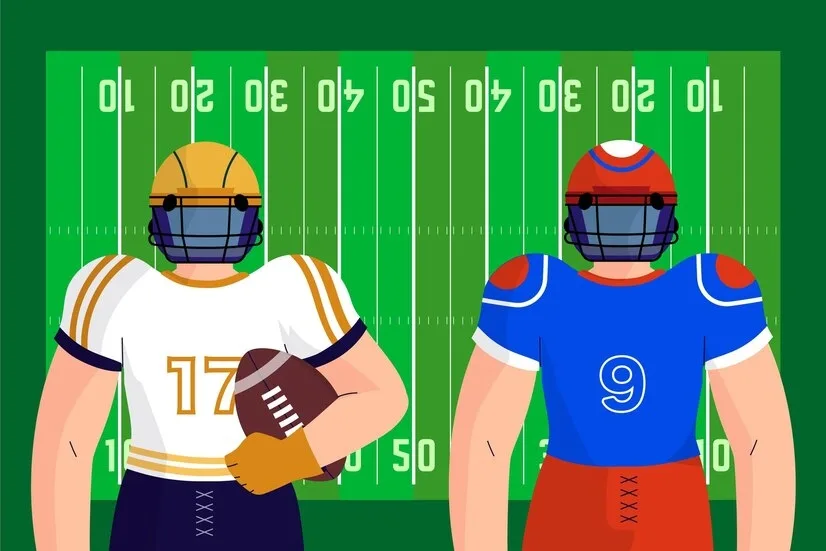In the dynamic world of American football, every position comes with its own set of challenges and rewards. One of the most thrilling and strategic plays involves the art of sacking the quarterback. Understanding this aspect not only enhances the appreciation of the game but also opens up a new realm of strategy and athleticism that defines professional football.
The Anatomy of a Sack
A sack is more than just tackling the quarterback; it’s about timing, precision, and reading the game. When executed well, it can shift the momentum of a match, often leading to pivotal turnovers or loss of yardage for the offense. For those keen on understanding the mechanics behind the sack, it involves a well-timed rush by a defensive player who breaches the offensive line to tackle the quarterback before he can release the ball.
The ability to sack a quarterback also requires an acute sense of timing. Defensive players must gauge the movements of the quarterback and anticipate the play before it unfolds. This foresight allows them to position themselves strategically to go beyond the offensive line’s defense. Furthermore, a successful sack demands raw speed and agility, enabling the defensive player to close in on the quarterback swiftly enough to make the tackle.
Historical Context of Quarterback Sacking
Quarterback sacking has a rich history that dates back to the early days of football. Originally, this tactical move was not as highlighted as it is today, but over the years, it evolved into a crucial element of defensive strategy. The term “sack” was popularized by Hall of Fame defensive end Deacon Jones, who described the act as putting the quarterback “in the sack.” Since then, it has become a standardized part of football terminology.
Throughout the decades, numerous players have made their mark by mastering the art of the sack. Legends such as Lawrence Taylor, Reggie White, and Bruce Smith have set benchmarks in quarterback sacks, showcasing their prowess and changing the dynamics of how defense is played in the NFL. Their legacy continues to inspire both seasoned players and aspiring athletes to hone their skills in this challenging domain.
The Role of Defensive Ends and Linebackers
In the pursuit of sacking the quarterback, defensive ends and linebackers play pivotal roles. These positions are often tasked with the responsibility of penetrating the offensive line and applying pressure on the quarterback. Defensive ends, positioned at the far ends of the defensive line, utilize their speed and strength to overpower offensive tackles and reach the quarterback.
Linebackers, on the other hand, have the versatility to blitz from various angles. Their unique positioning allows them to exploit gaps in the offensive line and surprise the quarterback with unexpected rushes. The synergy between defensive ends and linebackers is vital, as they must coordinate their efforts to maximize pressure on the quarterback while maintaining coverage on passing routes.
Strategies for Successful Sacking
Sacking a quarterback is as much about strategy as it is about raw athletic ability. Defensive coordinators devise intricate plans to outsmart the opposing offense and create opportunities for sacks. One popular strategy is the Try to sack as a quarterback nyt, where additional players rush the quarterback, overwhelming the offensive line. This tactic can be highly effective, but it also carries risks, as it leaves fewer players in coverage.
Another approach is disguising the defense’s intentions. By camouflaging their movements, defensive players can manipulate the quarterback’s reads, forcing him to hold onto the ball longer. This creates a window of opportunity for the defense to close in and execute a sack. Additionally, maintaining consistent pressure throughout the game can wear down the offensive line, increasing the likelihood of successful sacks.
Impact of Sacking on Game Dynamics
The impact of sacking a quarterback extends beyond the immediate loss of yardage. It can disrupt the rhythm of the offense, leading to hurried throws, interceptions, or fumbles. A well-timed sack can shift the momentum of a game, boosting the confidence of the defense and energizing the entire team. Conversely, repeated sacks can demoralize the opposing quarterback, affecting his decision-making and performance.
For fans and analysts alike, the thrill of witnessing a sack lies in its potential to turn the tide of a match. A single sack can alter the trajectory of a drive, forcing the offense to rethink its strategy and adapt to the relentless pressure from the defense. This dynamic interplay between offense and defense is what makes football an exhilarating sport to watch and study.
Training Techniques for Aspiring Sack Artists
Aspiring athletes looking to excel in sacking the quarterback must undergo rigorous training to develop the necessary skills. Speed and agility drills are essential to improve quickness off the line and the ability to change direction rapidly. Strength conditioning is equally important, as it enables players to overpower offensive linemen and maintain control during tackles.
Film study also plays a crucial role in preparing for sacks. By analyzing game footage, players can identify the tendencies and weaknesses of opposing quarterbacks and offensive lines. This knowledge allows them to anticipate plays and exploit vulnerabilities, increasing their chances of successful sacks. Additionally, practicing hand techniques and leverage can give players the edge they need to shed blockers and reach the quarterback.
Adapting to the Evolving Game
Try to sack as a quarterback nyt is constantly evolving, and so too are the strategies involved in sacking the quarterback. With advancements in offensive schemes and technology, defenses must continually adapt to stay competitive. The rise of mobile quarterbacks adds a new layer of complexity, as they possess the ability to evade pressure and extend plays with their legs.
To counter these challenges, defensive players must remain agile and versatile in their approach. They must refine their skills and stay informed about the latest trends in offensive strategy. By doing so, they can continue to be effective in their pursuit of sacking the quarterback, ensuring their team remains a formidable force on the field.
Famous Sacks in Football History
Throughout the history of Try to sack as a quarterback nyt, there have been iconic sacks that have left an indelible mark on the sport. From game-changing sacks in Super Bowls to record-breaking performances by legendary players, these moments have become etched in the memories of fans worldwide.
One such moment is when Lawrence Taylor famously sacked Joe Theismann, resulting in a career-ending injury for the quarterback. This sack not only showcased Taylor’s dominance but also underscored the physical demands of the sport. Similarly, Reggie White’s powerful sacks during his tenure with the Green Bay Packers demonstrated his unparalleled strength and skill.
The Future of Sacking in Football
Try to sack as a quarterback nyt continues to evolve, so too will the techniques and strategies associated with sacking the quarterback. The integration of data analytics and wearable technology has the potential to revolutionize training methods and enhance performance. By leveraging these tools, players and coaches can gain deeper insights into the biomechanics of sacking, allowing for more targeted and effective training programs.
Additionally, as the NFL places a greater emphasis on player safety, rule changes may impact the way sacks are executed. Striking a balance between aggression and safety will be crucial in ensuring that sacking remains an integral part of the game while protecting the well-being of players.
Conclusion
Try to sack as a quarterback nyt is a multifaceted aspect of football that combines strategy, skill, and athleticism. From its historical roots to its impact on game dynamics, the sack continues to captivate fans and players alike. By understanding the intricacies of this play, aspiring athletes can hone their abilities and contribute to the success of their team.
For those eager to explore further, consider attending live games or engaging with online communities dedicated to football analysis. Whether you’re a seasoned fan or a newcomer to the sport, the world of quarterback sacking offers endless opportunities for learning and excitement.








